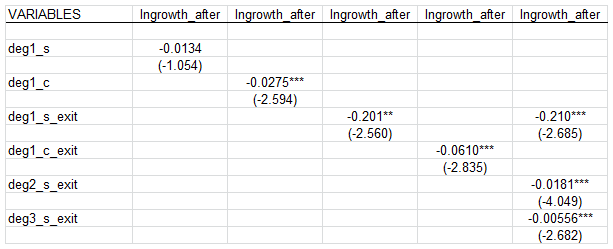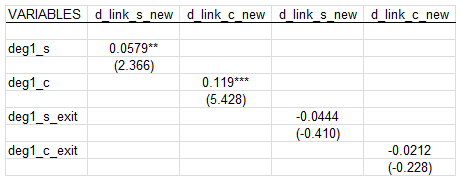Two and a half years have passed since the Great East Japan Earthquake. Although many issues have yet to be resolved, including that of the evacuees, many lessons concerning economic activities have been learned from the unexpected disaster. Companies' resilience was tested, and the introduction of business continuity management (BCM) was accelerated. Supply chains have also been overhauled to surmount companies' vulnerability.
It is important to understand the essence of companies' vulnerability by carrying out an ex-post facto assessment of the Great East Japan Earthquake in preparation for a future major earthquake and other unanticipated disasters. Accordingly, I have analyzed the process in which the damage suffered by companies within the affected areas spilled over to those outside of the affected areas via supply chains, as well as the ways in which these companies responded.
Linkages of companies outside of the affected areas
Even outside of the affected areas, companies reported suffering considerable damage via their supply chains as a consequence of the Great East Japan Earthquake. Vigorous research has been conducted on the damage to companies, and numerous research findings also have been produced through projects at RIETI.
In the course of researching supply chains and the damage to companies, it has been found that many companies outside of the affected areas are connected via indirect business relationships with those within the affected areas. Although half of these relations occur within an extremely close distance (40km) and only 3% of companies have direct transaction partners in the affected areas, this figure rises to 50%-60% when indirect transaction partners (partners of partners) are included, and thus many companies are closely connected indirectly (Note 1). The diagram below shows prefectural data on the percentages of companies in the affected areas, the transaction partners of companies in the affected areas, and the partners' partners, enabling us to visualize the geographical spread of these transactions.

Size of the spillover effects from companies in the affected areas
How did the spillover effects spread to companies outside of the affected areas via supply chains? Here, I will introduce the new research findings of the project at RIETI (Note 2). Data taken from a database created by Tokyo Shoko Research (TSR) on approximately one million companies were used to understand the inter-firm transactions. TSR's data were used in the aforementioned research as well, but this project utilized new data from before and after the earthquake to analyze changes in corporate performance and transactions.
First, companies in the affected areas were defined as those companies in the flooded areas. On the basis of this definition, it was confirmed that there was a statistically significant increase in the probability of exit and a lower growth rate of sales among companies in the affected areas (Note 3). It should be noted, however, that there were tremendous differences in the degrees of damage suffered by companies in the affected areas, with some even enjoying considerable growth, perhaps as a result of reconstruction assistance. As such, we focused on the hardest-hit companies, i.e., those that exited.
Companies whose suppliers are located in the affected areas are represented by the variable "deg1_s," companies whose customers are located in the affected areas by "deg1_c," companies whose suppliers are exiting companies located in the affected areas by "deg1_s_exit," and companies whose customers are exiting companies located in the affected areas by "deg1_c_exit." Table 1 shows the relationship between transactions with companies located in the affected areas and the sales growth rate after the disaster (Ingrowth_after) (Note 4). It was confirmed that the spillover effect was not significant but negative in companies whose suppliers are located in the affected areas, but was significantly negative in companies whose customers are located in the affected areas. It was found that the effect of reductions in sales tend to spill over from customers.
On the other hand, a significant spillover effect from both suppliers and customers was confirmed with these exiting companies which suffered major damage. More interestingly, the spillover effect from exiting companies was larger from suppliers than from customers, and a significant spillover effect from suppliers was confirmed not only on direct transaction partners but also on the partners' partners (deg2_s_exit) and then on their partners' partners' partners (deg3_s_exit).

Coping with the spillover effects from companies in the affected areas
How did companies outside of the affected areas cope with the spillover effects from companies in the affected areas? Focusing on changes in business partners, the relation with their building of new transaction partners (d_link_s(c)_new) is shown in Table 2. First, if the company outside of the affected areas have business partners—either suppliers or customers—in the affected areas, it was confirmed that there was a significant increase in the probability of building new business partners, and thus, constructing new business transactions has been flexibly established. However, if the company outside of the affected areas has transactions with exiting companies in the affected areas, no significant change in the probability of building new business partners was found. It appears that these companies were unable to establish flexibly new business partners, which in turn led to lower sales.
The results from the above analysis imply that companies can cope with relatively small shocks by flexibly building new business partners and adjusting inventory (Note 5), but that they are unable to deal flexibly with major shocks and thus face potential spillover effects even down to their business partners' partners. A localized shock can thus have a macro-level impact.
Given the vulnerability of company supply chains, these results suggest that prioritizing reconstruction assistance after major disasters toward companies experiencing major shocks would be preferable to uniform across-the-board assistance. In preparing for the mega-quake forecast for the Tokyo Metropolitan Area or a large-scale volcanic eruption, insurance systems, disaster recovery legislation, and other measures capable of addressing major shocks should be considered based on the empirical evidence.



